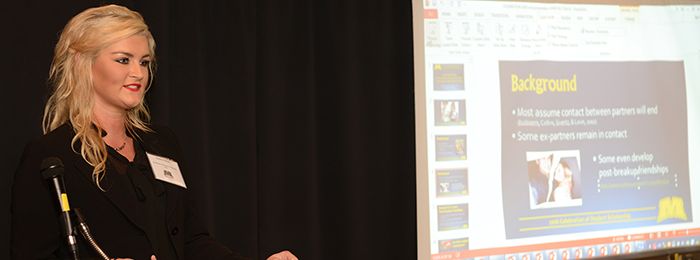Document Type
Video
Publication Date
Spring 2021
Abstract
Telomeres are DNA structures located at the ends of linear chromosomes. They function, in part, to allow DNA ends to be copied before cells divide. Since the standard DNA replication machinery can’t fully copy telomeres, most eukaryotic cells require the vital ribonucleoprotein enzyme telomerase. Telomerase is composed of a TERT (telomerase reverse transcriptase protein) and telomerase RNA. As we age, telomeres shorten since most human cells do not express telomerase. If telomeres grow too short, it triggers a cell-cycle arrest known as senescence, which can ultimately result in cell death. On the other hand, >85% of human cancers show over-expression of telomerase, which is required for the uncontrolled cell division that is a hallmark of this disease. Interestingly, despite the importance of telomerase RNA, its structure and function is not well understood. To shed light on the correlation between telomere length and telomerase RNA structure, we devised a genetic screening strategy using the yeast Saccharomyces cerevisiae to identify novel gain-of-function (GOF) mutations in telomerase RNA. First, we transform a library of random telomerase RNA mutant plasmids into yeast. Then, we select for yeast that appear to have longer telomeres using a selectable marker in a sub-telomeric region. Finally, we rescue the plasmids and send them for sequencing to determine the mutations. To date, I have screened ~1000 colonies and identified ~10 putative GOF alleles. I am currently working to identify the mutations present in the putative GOF alleles. Identification of more active versions of telomerase RNA could ultimately lead to an understanding of enzyme function that lengthens telomeres and decreases the rate of aging.
Recommended Citation
Childers, Jose, "Genetically Screening For Gain Of Function Mutations In Telomerase RNA" (2021). 2021 Celebration of Student Scholarship - Oral Presentations. 20.
https://scholarworks.moreheadstate.edu/celebration_videos_2021/20
Included in
Arts and Humanities Commons, Biology Commons, Business Commons, Engineering Commons, Higher Education Commons, Nursing Commons, Social and Behavioral Sciences Commons

